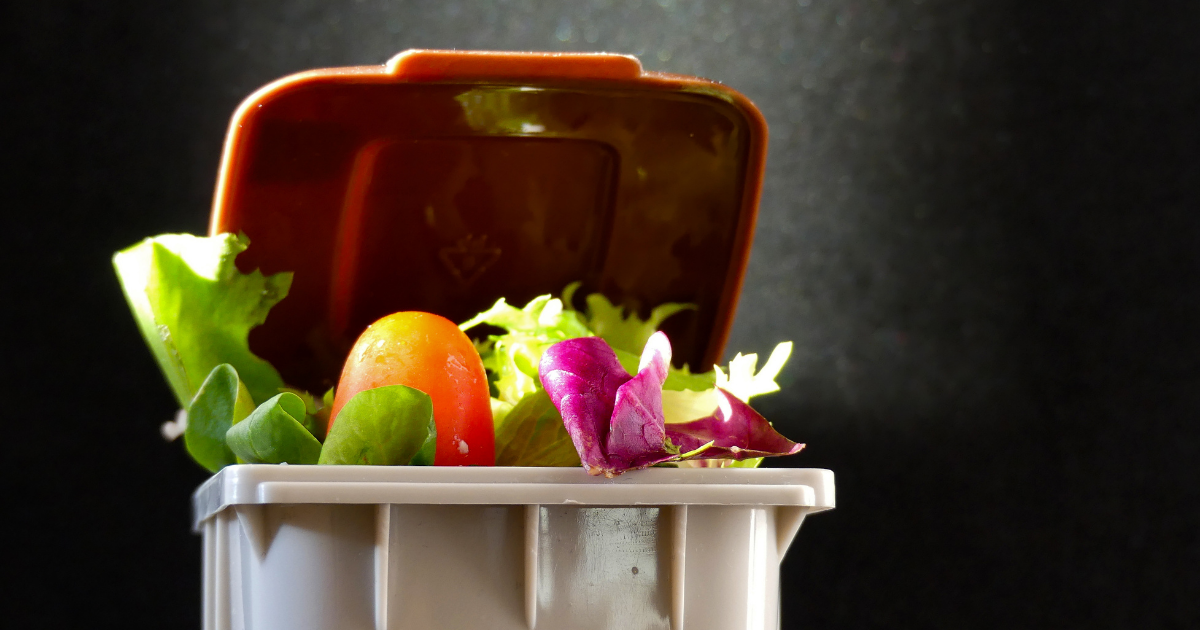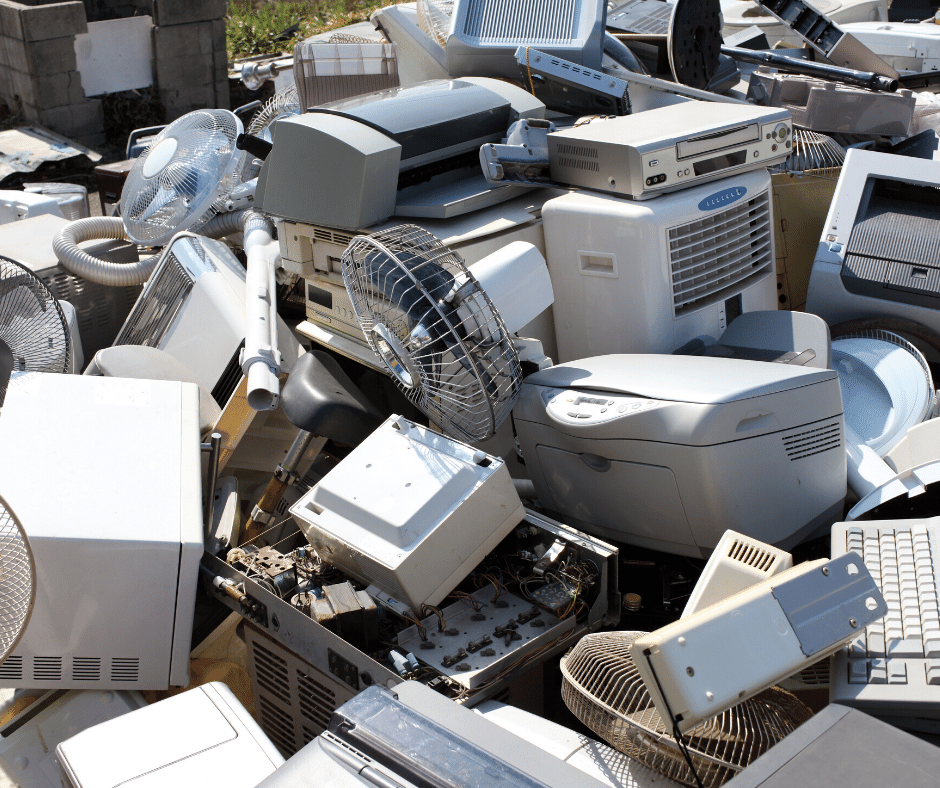Get to know the five R's
By James Atkinson
We’re all familiar with the Three R’s of sustainability (Reduce, Reuse, Recycle) – they’ve been at the foundation of sustainability thinking and action for decades. As people are becoming more engaged in ‘thinking global’ and ‘acting local’, the Three R’s are evolving and expanding to take into account the higher level of maturity in our approaches to consumption and waste.

Think of the Five R’s as a more advanced action toolkit. Through Five R’s thinking, we can reduce our negative impact, improve our immediate environment, and even unleash some of the creativity that’s lurking within.
REFUSE
Saying “no” through our purchasing decisions sends a powerful message to producers, and it works for low-cost and big-ticket items alike. In our consumer society the market overwhelmingly determines what is manufactured, and as soon as demand drops for a particular product, sellers look to understand why. This is the clearest signal we can send manufacturers and retailers, and when we follow up with direct communication to a company’s feedback channels (think ‘social media’, and ‘contact us’ email) they are left in no doubt what our expectations are.
If we were to rank the Five R’s in order of impact (best outcome for the least amount of energy expended), ‘Refuse’ has to be number one on our list. If it’s not needed, and/or if it’s detrimental to people or planet…, if we can avoid it or reject it outright…, let’s just ‘give it a miss’!
REDUCE
Wastefulness is at the heart of our problem. We buy far more than we need, and almost everything we buy these days comes in its own tidy little packet or wrapper. Either that, or we bundle things up into single-use bags for our convenience. Our challenge is to reduce the volume of products that we buy (and don’t use) and similarly reduce the associated packaging. In other words, reduce what we bring into the household and reduce what we push out as waste.
The Australian Bureau of statistics tells us that Australians produce about 76 million tonnes of waste per annum and nearly 13 million tonnes of that comes from households. If that isn’t startling enough, according to Sustainability Victoria, Aussies also chuck out about 1.9 million tonnes of packaging every year.
There are simple, practical ways we can all reduce our household waste output and the old saying “if it isn’t measured, it isn’t managed” is particularly true in this context. Keeping track of the items that we throw away after their expiry date, the things that we thought we’d use, but typically never do (large size condiments and sauces for example, or the oversized ‘special packs’ that we can’t ever get through) is a great start. Doing this can help us identify the items we can buy less of (or in smaller portions over the same period of time). Keeping an eye on what we are putting in the rubbish bound for landfill can tell us a lot about what we really need.
Seek out any of the hundreds of tips/tricks sites on the Internet that give practical advice on reducing consumption and reducing waste. A favorite is American site Zero Waste Home. In their “tips” section, they walk through room-to-room giving great advice for action in each area of the home.
REPAIR
There was a time, not so long ago, when it was almost unthinkable to throw away things that could be repaired. Grandad patched and re-patched his wheelbarrow so many times it was hard to tell if there was anything of the original left. We darned our socks and sewed up split seams, we glued and nailed furniture (and heels) and we proudly showed off our handiwork to any (and all) who would listen. In the hustle and rush of contemporary life, we may have lost some of the skills of yesteryear, but we mustn’t despair, with so much guidance available online and in-person, most repairs are easily seen to at home. Using simple Internet search terms such as “How to Fix (product name)” or “How to Repair (product name) typically returns excellent results – be careful, use your judgement and look at more than a few different options (and don’t mess with electricity).
Delving into our Messrs Fixit isn’t just great for reducing waste, it can be a fantastic boost to the back pocket. So many things these days are not built to last (in fact, it seems many products are deliberately built to 'not last'). It doesn’t take much of an ‘eye’ to spot the products that have been crafted with longevity in mind. It's not a coincidence that these are the items that are often the most easily repaired.
REUSE
Plenty of what we throw away can be reused, either by ourselves or others and maybe not in ways we might have originally intended. Charity shops like Vinnies, Red Cross and Oxfam (and heaps of other not-for-profits) are always on the lookout for donations of pre-loved clothes, crockery, cutlery and some items of furniture (always great for a bargain too). They raise money for excellent causes and giving new life to the things that we might have tossed out makes a whole lot of sense.
Hand-me-downs are great. If you don’t have folks in your network who might use what you no longer need, consider gifting through online listing services like buynothing or old faithfuls like ebay and Gumtree. The benefit to the community is amazing and it feels awesome to be a service to others (even in a small way).
Most of us reuse stuff all the time – old jam jars can become containers for all manner of items, ice-cream tubs become painting buckets, shopping bags become bin liners; but there’s so much more that can be done (saving time and money and reducing our waste output at the same time). This is a great space for getting creative and getting family and friends involved. Look around and be inspired, everything from furniture to childrens’ toys can have a new lease of life.
RECYCLE
Almost every local council in the country now provides options for recycling. These can include specially identified bins for waste separation and curb-side collection, drop-off points for dead car batteries, old paint and dirty oil. Many also allow free drop-off for white goods, old matresses and furniture. Around 30 per cent of all Australians currently have access to a Food Organics and Garden Organics (FOGO) collection service which allows food scraps to be added to garden waste bins so it can be recycled into top quality compost - a valuable resource that improves our agricultural soils, boosts our economy and creates jobs. FOGO will be rolled out nationally by 2023.
Hand-in-hand with recycling (and reuse), is the idea of “upcycling”. Worldwide, “upcycling” has taken off beyond what we might have expected just a few short years ago. Leading the way is Sweden’s ReTuna Återbruksgalleria. As a broad and diverse community, we are moving towards similar opportunities, and grassroots movements like UpcycledAustralia and countless smaller local endeavours.
If we look around, we might see folks talking about “Six R’s” or “Seven R’s”, but for most of us traversing the day-to-day of modern life, Five R’s thinking gives a great opportunity for action in our everyday existence. It may be that wicked problems are impossible to solve at an individual level, but every step we make towards ‘doing better’ adds to our legacy as a generation of humans who understood that there was a critical problem that needed to be addressed.
Jim is a dad, writer, PhD researcher and corporate sustainability advisor.
Search for other blog topics:





